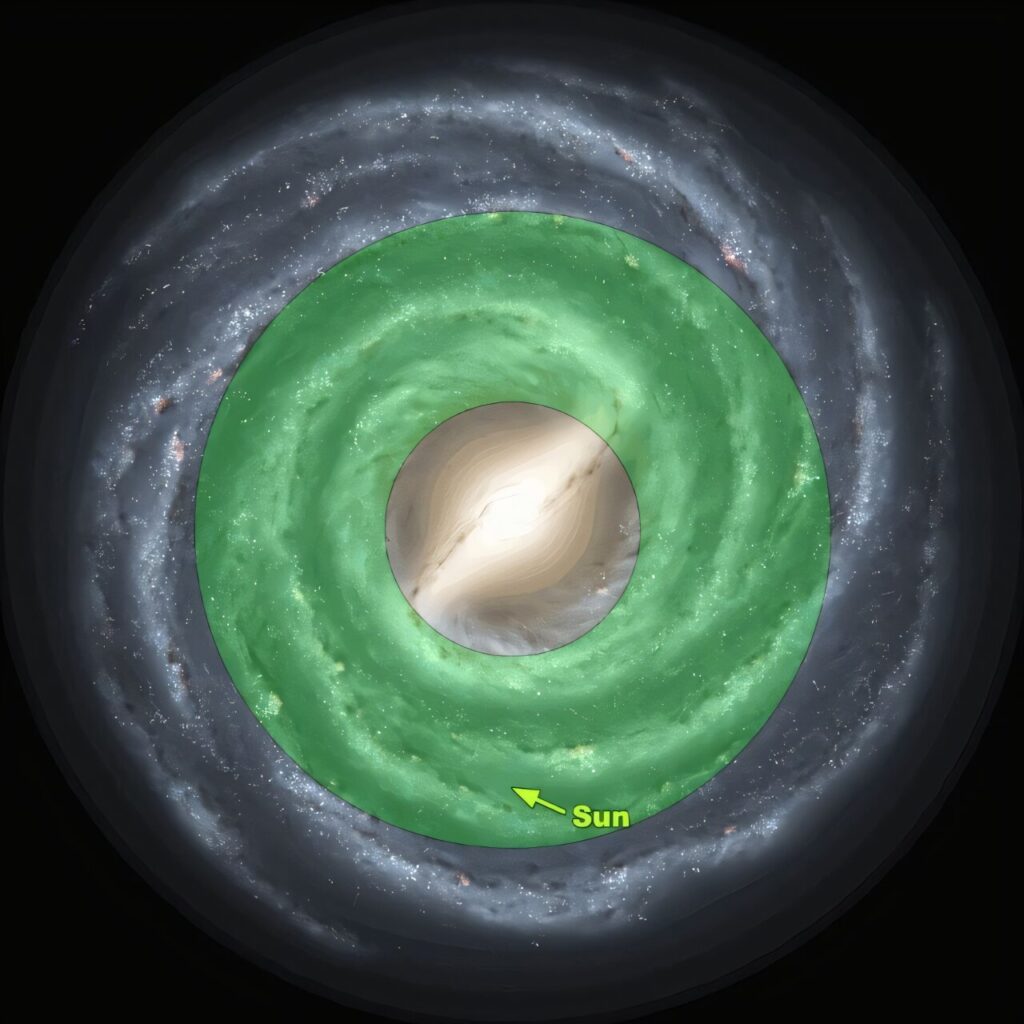
Recent research has challenged the longstanding model of the galactic habitable zone (GHZ), traditionally thought to exist between 7-9 kiloparsecs from the center of the galaxy. This study, published on the arXiv preprint server and soon to appear in Astronomy & Astrophysics, suggests that stellar migration significantly impacts the potential for habitable planets in the outer galaxy regions.
The international team of researchers behind this study has explored how the movement of stars, known as stellar migration, could influence the likelihood of finding habitable planets. By employing a series of computer models, they simulated scenarios with and without stellar migration to assess the statistical probabilities of terrestrial planets forming around stars throughout the galaxy. Their findings indicate a fivefold increase in the likelihood of stars hosting habitable planets due to stellar migration.
Understanding the Galactic Habitable Zone
The concept of the GHZ builds on the idea of the stellar habitable zone (HZ), which refers to the distance a planet must orbit its star to maintain liquid water on its surface. Introduced in the 1950s, the HZ was expanded in the 1980s to include the GHZ, defined by regions rich in heavier elements necessary for forming terrestrial planets like Earth.
Despite its evolution, the GHZ remains a topic of debate within the scientific community. The consensus is that it does not exist near the galaxy’s center, where frequent supernovae and other celestial events would hinder the formation of habitable planets.
Implications for Future Space Missions
The study’s conclusions are particularly relevant as several upcoming European Space Agency (ESA) missions aim to expand our understanding of exoplanets and their potential to support life. The PLAnetary Transits and Oscillations of Stars (PLATO) mission, set to launch in December 2026, will scan one million stars to identify exoplanets through the transit method, a proven technique for discovering these distant worlds.
Following PLATO, the Ariel mission, scheduled for a 2029 launch, will focus on observing at least 1,000 confirmed exoplanets to analyze their chemical and heat compositions. Meanwhile, the Large Interferometer For Exoplanets (LIFE) mission, initiated in 2017, aims to study the atmospheres of terrestrial exoplanets to detect potential biomarkers, signs that could indicate the presence of life.
Expanding the Search for Life
The research highlights the importance of considering stellar migration when evaluating the GHZ and searching for habitable planets. As the study notes, “In this study, we have significantly expanded the exploration of the parameter space defining the Galactic Habitable Zone, compared to previous analyses present in literature.”
With these findings, scientists can refine the parameters for identifying habitable worlds beyond Earth, potentially leading to groundbreaking discoveries about life in the universe. As new data from upcoming missions becomes available, the understanding of the GHZ and its implications for life beyond our planet will continue to evolve.
The announcement comes as the scientific community eagerly anticipates the insights that these future missions will provide. By expanding the scope of research into the GHZ, scientists are poised to unlock new possibilities for finding life beyond our solar system.







